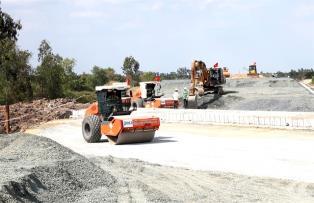The national occupancy rate for ready-built factories remains high, averaging around 88 per cent, as of the third quarter of this year.
HÀ NỘI — Ready-built factories in Việt Nam currently boast high occupancy rates and competitive rental prices compared to other countries both in the region and globally, according to Cushman & Wakefield.
The national occupancy rate for ready-built factories remains high, averaging around 88 per cent, as of the third quarter of this year.
The Southern Key Economic Zone, with a cumulative supply of approximately 6.5 million square metres, recorded an occupancy rate of 92 per cent.
The northern region maintains a stable occupancy rate ranging from 84 per cent to 88 per cent, with a total supply of around 5.1 million square metres.
This growth is primarily driven by foreign direct investment (FDI), with 54 per cent of newly licensed manufacturing projects opting to lease ready-built factories.
In terms of pricing, the average rental rate for ready-built factories nationwide is around US$5.5 per square metre per month, which is highly competitive compared to regional and global standards.
Cushman & Wakefield noted that Việt Nam had a competitive advantage, as rental rates for ready-built factories were lower than in international markets.
Although rental rates for ready-built factories in Việt Nam are expected to rise, they remain competitive compared to other ASEAN countries.
The country’s strategic advantage lay in its political stability and its network of Free Trade Agreements (FTAs), including the CPTPP, EVFTA and RCEP, which provide preferential tariff access to 65 per cent of global markets.
The ready-built factory market is expected to grow based on quality, with the Northern region expected to add over 1 million square metres of floor space over the next three years.
Rental rates for land are forecasted to increase by 3–9 per cent annually in the North and 3–7 per cent in the South.
Investment is shifting toward facilities with high technical specifications that comply with ESG standards in well-connected satellite provinces, reflecting a trend toward higher quality and sustainability. — VNS






